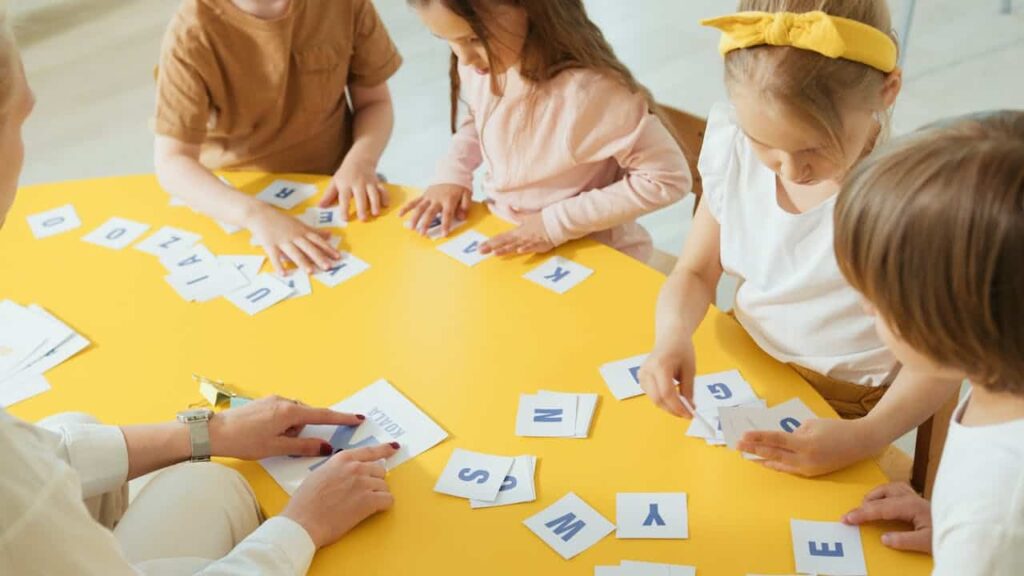No one is born skilled, but everyone is born with the potential to be skilled.
How much effort you put into mastering life skills will define your degree of success in the future.
Starting from childhood to adolescence, it’s just like a training period. The better you train kids and teens now, the better they will perform in the life ahead.
If You want your little one to:
- Enhance control over impulsive behavior
- Improve working memory
- Easily switch between different tasks, perspectives, or trains of thought
- Good at planning, prioritizing, and organizing tasks and things
- Understand and respond to different human emotions
In all these cases, executive functions come to the fore. We are going to discuss executive functioning activities here.
What are executive functioning skills?
Just like social skills, these are also very important life skills, which include:
- Emotional regulation
- Working memory
- Self-control
- Planning and organization
- Thinking flexibility
- Problem-solving
And more.
If your kids or teens master these skills, their lives will start running smoothly. They will notice a boost in confidence, they will start learning better time management strategies and setting life goals become easier.
But the question that arises here is;
How can anyone master these life skills?
Yes, this is the question that we are going to cover in this article.
But first, understand one important concept;
One basic concept:
Our brain is a very complicated machine. Despite its complexity, it has a very simple working principle.
It learns things and unlearns as well, and both are based on the same principle.
That principle is “continuous-regular-repetition.”
What does that mean?
It means that whenever you want to feed something new into your mind, you have to forcefully repeat it regularly for several days. Then after a specific time, your mind will accept and condition it as a normal part of your life.
What does “Forcefully” mean here?
I said “Forcefully”, it’s because naturally human mind resists any change. It wants to continue how it is going. Whenever you start a new thing, it wants you to stop; it insists you to quit. If you quit, you lose. If you keep doing, you will certainly win. Now it’s up to you.
It’s true, whether you want to:
- Form a new habit
- Break a bad habit
- Change your daily routine
- Learn a new skill
Any other long-term change in this complicated algorithm will require this only simple principle.
I think I’ve cleared my point to that extent.
Now let’s come to the point: How will we teach executive functioning skills to our kids and teens?
For this, We have come up with 31 well-researched executive functioning activities to master these very important life skills.
31 Executive functioning activities for kids and teens:
Activities for Emotional Regulation
To regulate our emotions, we have to identify and understand our emotions first.
Why is it necessary to identify emotions?
It is necessary for shifting emotions from an unconscious to a conscious state of mind. Most of our mind is working in an unconscious state, and we respond to everything unconsciously, as we have been doing for years. Below, we have discussed ways to identify them.
If you have identified your emotions, then what?
Now you will see two automatically open for you:
- You will be able to see the cause behind…
- You will be able to respond accordingly…
That way, you’ll be able to regulate your emotions as you wish.
So far, we have seen why it is important to identify emotions. Now we will see;
How can I identify my emotions?
One of the best ways to do this is to write them down. Suppose I ask you, if you can see your emotions. Obviously, your answer will be, “No, I can just feel them.” But there is still a way you can:
How can I see and then regulate them?
Yes, bring them out of your mind, “Put them exactly on a piece of paper”, see them, identify them, understand them and regulate them.
Activities to regulate emotions:
- Create an emotional collage, use pictures to depict joy, frustration, and calmness on a collage board.
- Act out scenarios such as winning a prize, losing a game, and getting a surprise gift.
- Reflect on feelings during a challenging homework assignment, a disagreement with a friend, or a moment of success.
- Practice deep breathing and focus on the present moment for 5 minutes, noting sensations and emotions.
- Navigate through a game board where landing on different spaces represents emotional challenges and regulation strategies.
Executive functioning activities for Working Memory

Working memory is our brain’s ability to hold information, store it for a short period, and put it to use while working. It is very helpful and essential in every learning process. It enhances the learning process, simplifies multi-step tasks, improves listening skills, and goes along with our daily life routine.
But how can we improve it? Let’s discuss it!
One thing must be remembered! There are many types of strength of mind and many ways to work on them too. You have to pick one at a time and put in a focused effort on that.
“We need focused work.” What does it mean?
Let me explain.
The human brain is naturally designed to focus on one thing at a time. Paying attention to different things at the same time is not within the scope of this machine. So, your improvements will be related to what you have been focusing on throughout the work.
To give your working memory a boost, we have brought you some noteworthy working memory-focused activities.
Activities to boost working memory:
- Memory Card Game: Match pairs of cards with images of animals, fruits, and vehicles
- Number Sequencing: Memorize and recall number sequences like 3, 7, 1, 9, and 2
- Story Recall: Read a short story and ask questions about characters, events, and details
- Listening and Following Directions: Follow a set of instructions to draw a specific picture without looking at the instructions again
- Word Recall Game: Take turns adding words to a list and recalling them in order, starting with simple words like cat, house, and tree.
Executive functioning activities for Self-Control

Doing something valuable without wanting to do it and refraining from something worthless while wanting to do it.
Let’s see some examples.
You really want to eat a whole bag of cookies, but self-control says, “Hmm, maybe I’ll just have a few, so I don’t feel sick later.”
You really want to watch your favorite TV show, but self-control says, “I should finish my homework first.”
When you’re playing with friends and you really want to grab a toy first, you still wait for your turn. That elaborate your self control.
Research:
“Stanford marshmallow experiment”
This research was a psychological study conducted by Stanford University in the late 1960s and early 1970s to understand children’s self-control and delayed gratification.
Researchers placed a child in a room with a marshmallow on a table. The child was told they could eat the marshmallow right away, but if they waited for a short period (usually 15 minutes), they would be rewarded with an additional marshmallow. The researchers then left the room, allowing the child to make a choice.
The main goal was to observe how long each child could resist the immediate temptation of eating the marshmallow in favor of receiving a greater reward later. The study aimed to explore the connection between a child’s ability to delay gratification and their later success in various aspects of life.
The results suggested that children who were able to wait for the second marshmallow tended to have better life outcomes, such as academic achievement and health, leading to discussions about the importance of self-control and delayed gratification in personal development.
Activities to boost self-control:
- Play a game of Simon Says, where children have to follow instructions only when the phrase “Simon says” is used. This helps kids practice listening and controlling their actions
- Board games like “Candy Land” or “Chutes and Ladders” involve taking turns and following rules, promoting patience and self-control
- Teach your child a simple, deep breathing exercise. When they’re upset or excited, encourage them to take a timeout and practice a few deep breaths to regain control of their emotions
- Practice counting to ten before responding to a request or when feeling impatient
- Help them write about a situation where self-control was demonstrated and another where improvement is needed
Executive functioning activities for Planning and Organization

What planning actually is, with simple examples:
Planning is; before school, your kid lays out his clothes, packs his backpack with books, and maybe even decides what he wants for lunch. It’s like saying, “I’m preparing everything I need for a successful day!”
Planning is when your little one decides to do his homework before playing. It’s like having a little schedule in his head that says, “First, I’ll finish my homework, and then I’ll have lots of time to play.”
Now, understand organization in daily life:
Organization comes when your kid puts things away, forgets, and then keeps asking where he put them. It’s because he hasn’t designated a specific place for everything.
Organization is like giving each toy a home. Instead of leaving them everywhere, your kid decides to put each toy in its proper place. It’s like creating a special spot for everything so he can find it when he wants to play again.
Now the thing is;
How do I instill these skills in my child?
To help you with this task, we have come up with a set of focused daily-life executive functioning activities. Pick whatever activity fits your convenience, and make your child a master of planning and organization.
Activities to instill planning and organization skills:
- Make a simple daily schedule with your child. Include schoolwork, sports, meals, and bedtime. This helps them understand the concept of planning their day.
- Use LEGO bricks or other building blocks to create a visual calendar. Assign different colors to different activities or subjects to make it more engaging.
- Pick a room or play area together and work on organizing it. Help your child decide where each type of toy or item should go, creating a designated spot for everything.
- Ask your loved one to plan a playdate with a friend. They can decide on activities, snacks, and even make a list of things to do during the playdate.
- Make your kiddo a leader and let him take charge of planning a family outing. This could involve choosing the destination, figuring out transportation, and making a list of things to bring.
Executive functioning activities for Thinking Flexibility
How easily your child can adjust his thinking when he faces a new, unexpected situation defines his thinking flexibility.
Well, examples will make it easy.
Changing Plans:
Imagine your kid and a friend planned to play outside, but it started raining.
Now, flexible thinking is, instead of being disappointed, your kid suggests playing board games indoors or building a blanket fort.
Trying new foods:
Your kid usually eats peanut butter and jelly sandwiches, but today there’s a new dish for lunch.
So, instead of saying, “I don’t like it,” your kid takes a small bite and discovers that they enjoy the new food.
Handling Changes:
Your family was going to have a picnic, but your kid’s grandparents surprised them with a visit.
Here, flexible thinking means not being upset about the change. Happily adjust the plans, and include grandparents in the picnic plan.
It seems that now you have understood the whole thing. Now we have to move on to the real step of how to master them.
Let us put into action the selected activities for this particular skill.
Activities to improve flexible thinking:
- Introduce a variety of puzzles, including jigsaw puzzles, crosswords, and Sudoku. These games encourage kids to think creatively and find alternative solutions when faced with challenges.
- Encourage imaginative play and role-playing scenarios. This could involve pretending to be different characters or acting out everyday situations. It helps kids see things from different perspectives.
- Create a “mix and match” game with clothes or objects. Ask your child to come up with creative combinations, like wearing a hat as shoes or using a spoon as a drumstick. This fosters creativity and unconventional thinking.
- Use story cubes, which have pictures on each side. Roll the cubes and ask your child to create a story incorporating the images that appear. This activity enhances storytelling skills and imaginative thinking.
- Provide various building materials like blocks, LEGO, or even household items. Challenge your child to build something specific, then ask them to transform it into something entirely different. This promotes adaptability and creative thinking.
- Organize a scavenger hunt, but add a twist. Instead of finding typical items, ask your child to find things that match a certain color, shape, or size. This encourages them to think creatively about what constitutes a match.
Executive functioning activities for Problem-Solving
In simple words, problem-solving is like being a super-smart detective! When anyone brainstorms solutions for common problems like a broken toy, a lost item, or a disagreement with a friend.
Let’s make it easy with simple daily life examples.
Homework Trouble:
If your kid is stuck on a tricky homework question, problem-solving is when they don’t give up. They might say, “I’ll ask the teacher for help” or “I’ll look in my book for a clue.”
Sharing Toys:
If your kid and their friend both want to play with the same toy, problem-solving is when they find a solution together. Maybe they take turns, play a different game, or find another toy to share.
Activities to enhance problem solving skills:
- Provide your kid with puzzles of varying difficulty levels. Jigsaw puzzles, Sudoku for kids, or even simple crosswords can encourage logical thinking and pattern recognition.
- Games like Chutes and Ladders, Connect 4, Chess, Egg Drop, or The Human Knot can enhance problem-solving skills in a fun way.
- Involve your kid in simple cooking activities. Following a recipe and measuring ingredients require sequential thinking and problem-solving. Plus, they get a tasty reward at the end!
- Ask your kid to create their own story. This activity encourages creativity and problem-solving as they decide on the plot, characters, and how the story will unfold.
- Set up a mini-obstacle course in your backyard or living room. Your kid can navigate through it, improving spatial awareness and problem-solving as they figure out the best way to overcome each obstacle.
Conclusion:
That’s it for today. All of these are fun ways to install these new softwares called “executive functions” into your kid or teen “mental operating system.”
Remember! it takes time to learn or unlearn anything and it takes some extra effort too. Your commitment will level off your way. Go and try which activity suits you best. Best of luck!

3 thoughts on “31 Focused Executive functioning activities”
Comments are closed.